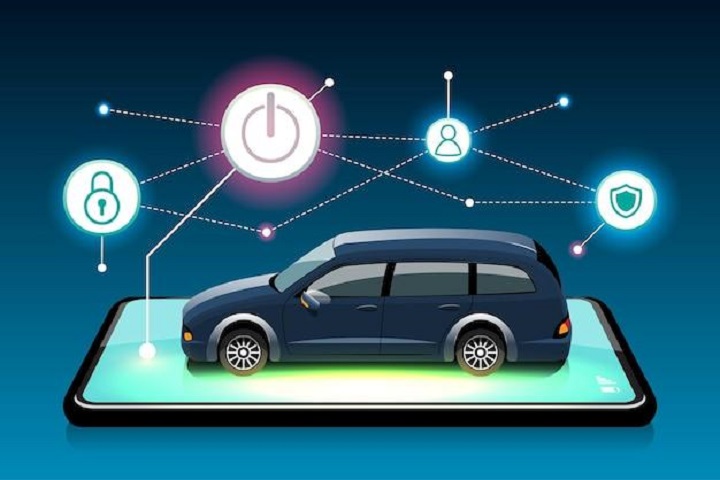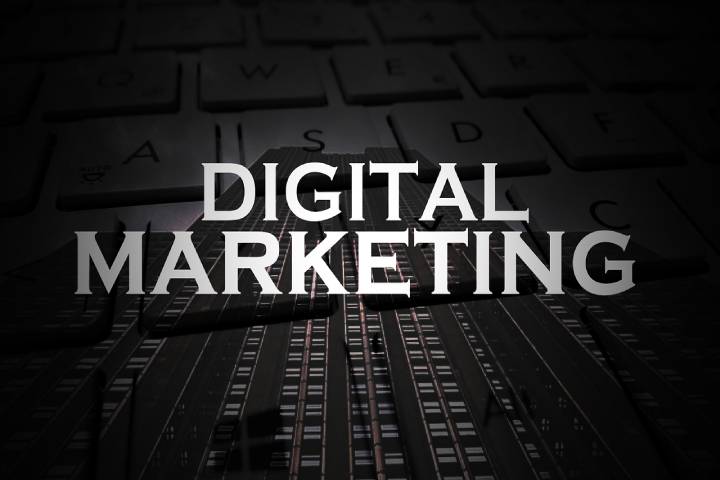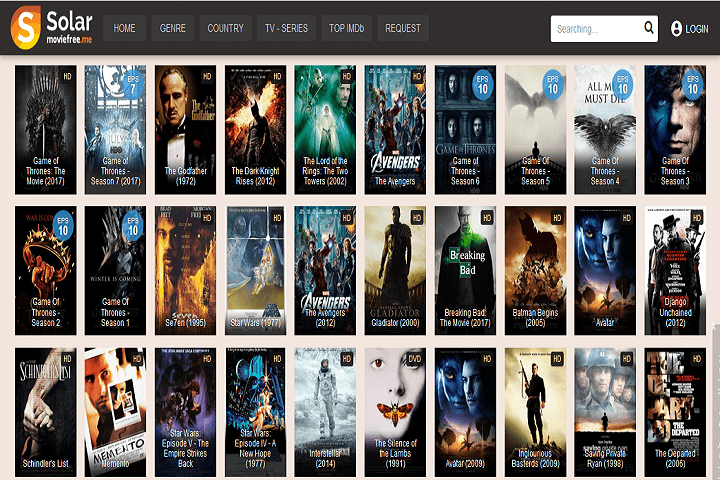Insurance
5 Predictions About The Future Of Car Connectivity
In this blog post, we’ll take a look at five predictions for car connectivity that we think you should know about.

The future of car connectivity is bright and full of possibilities. As we move closer and closer to an era where cars are autonomous and connected, there are several exciting developments on the horizon for car owners and manufacturers alike. In this blog post, we’ll take a look at five predictions for car connectivity that we think you should know about.
Table of Contents
1. Car Connectivity Will Get Even Better
In the future, car connectivity will get even better. Many experts believe that we will see more autonomous cars and more connected cars shortly. This is because the technology to connect cars is already available, and it is getting better and better.
One of the ways that car connectivity is getting better is through the use of 5G wireless technology. 5G wireless technology has the potential to provide much faster internet speeds than what we currently have available. This means that you will be able to access your emails, social media platforms, and other online content much faster while driving.
Another way that car connectivity is getting better is through the use of sensors. These sensors are used to monitor various aspects of a car’s environment, such as its temperature, humidity, and fuel level. This information can then be used by the car’s software to make decisions about how to operate it.
Overall, car connectivity is continuing to improve at a rapid pace. This means that you will be able to enjoy all of the benefits that this technology has to offer shortly.
2. The Future of Car Sharing
The future of car sharing is looking bright. The technology that enables car sharing is becoming more and more commonplace, making it easier for people to access cars when they need them. There are several reasons why this is happening, and the trend is likely to continue.
One reason car sharing is on the rise is that it’s becoming more affordable. Car-sharing companies like Zipcar and Uber operate on an economy model, where users share rides instead of renting cars outright. This makes car sharing much cheaper than traditional rental options, which means that more people are starting to use it.
Another reason car sharing is growing in popularity is that it’s eco-friendly. Instead of driving their cars, people can take advantage of car-sharing services to reduce their carbon footprint. This not only saves them money but also helps protect the environment.
Overall, the future looks bright for car sharing. It’s continuing to grow in popularity due to its affordability and eco-friendly benefits, and there’s no doubt that it will continue to do so in the years to come

3. Self-Driving Cars Aren’t So Tesla-Centric After All
As self-driving cars start becoming a reality, it’s important to remember that they won’t be exclusively Tesla-centric. Ford Motor Co. has been working on its own self-driving car technology for years now, and GM has announced plans to create a network of self-driving cars that will operate as part of a “cradle to grave” ecosystem.
This means that there are several companies out there working on self-driving car technology, and the race to become the first to market will likely be fiercely competitive. However, regardless of which company wins the race to market, it’s clear that self-driving cars are going to change the way we commute forever.
4. Electric Cars Aren’t the Only Ones on the Rise
Electric cars are certainly on the rise, but other types of vehicles are also seeing increased popularity. Vehicle-to-vehicle communication (V2V) is one technology that is gaining a lot of attention, as it could lead to some major improvements in safety.
Vehicle-to-infrastructure (V2I) is another technology that is becoming more popular, as it could allow drivers to get information about traffic conditions or weather updates without having to pull out their phones. Both V2V and V2I have the potential to improve safety and make driving more convenient.
5. The Future of Car Connectivity
The future of car connectivity is full of potential. Manufacturers are now building in more and more features to make the driving experience smoother and more efficient, especially when it comes to connected cars. Wireless technology has made great strides over the last few years, and many companies are brewing up innovative new ways to connect vehicles.
Some experts believe that we’ll see a ‘smart revolution’ in automotive technology where all cars will be connected by 2020. This would include devices like sensors that can read road conditions, mapping software that can provide directions, and even air conditioning systems that could be controlled remotely. Some automakers already have prototypes of this type of system in development.
6. The Impact of the Internet of Things on Car Connectivity
The future of car connectivity is still being explored, but there are a few predictions about how it will change the way we live and work. For one, the Internet of Things (IoT) will play a huge role in connecting cars and other devices. Not only will they connect, but they’ll also be able to exchange data to make interactions more seamless. This could lead to new ways of managing our transportation needs, as well as provide a wealth of new insights into how we’re using our vehicles.
Another prediction is that we’ll see a shift away from standalone vehicles. Instead, fleets of small, connected cars will be commonplace. This would allow for more efficient use of resources and improved safety due to the increased monitoring capabilities. It’s also possible that this type of system would eventually replace the need for personal automobiles altogether.
Whatever the case may be, it’s clear that car connectivity is going to continue evolving at an impressive pace in the years ahead. We can only wait to see what developments crop up next!
Conclusion
Looking into the future, it’s easy to see that car connectivity will only continue to grow in importance. With more and more people relying on their cars for transportation, it becomes increasingly important for manufacturers to provide drivers with a variety of options for staying connected while behind the wheel. From hands-free phone use to streaming music and videos, car connectivity has truly become a one-stop shop for keeping drivers entertained and informed. So what other exciting possibilities await us in the years ahead? Only time will tell!
Business
Tax Filing Advice: Self-employment Tax (IRS Form 1040)
In this post, we’ll show you how to fill out Form 1040 and offer some tips on how to minimize your tax obligations. Tax Filing Advice – Self-employment Tax – IRS Form 1040.

Filing your taxes can be challenging, especially if you are a freelancer. As a freelancer, you are required to pay self-employment tax, maintain track of your revenues and expenses, and submit projected tax payments throughout the year. You can complete an IRS Form 1040 with a little help and a quarterly tax calculator, despite the fact that it could appear challenging. In this post, we’ll show you how to fill out Form 1040 and offer some tips on how to minimize your tax obligations.
Table of Contents
1. Assemble Your Papers
Before you start filling out your Form 1040, you must gather all the necessary information and paperwork. Your W-2s, 1099s for any freelance work you did, receipts for any anticipated tax deductions, and any other financial records you might have are included in this. You must also include your Social Security number and the Social Security numbers of any dependents you wish to claim.
2. Verify Your Filing’s Status
Your file status affects your tax rate and the size of your standard deduction. Determine which filing status is appropriate for you based on your marital status, the number of dependents you have, and other factors.
3. Ascertain your income
Your total income for the tax year is what is referred to as your gross income. This includes all forms of income, including wages, salaries, tips, and revenue from side jobs. Add up your income for the tax year and gather all of your supporting papers. List all of your sources of income from contract work.
4. Remove Your Modifications
By deducting adjustments from your gross income, you can reduce your taxable income. They also pay your health insurance premiums, student loan interest, and IRA contributions if you work for yourself.
5. Choose Your Tax Savings
By taking some expenses out of your taxable income, you can reduce it. The two distinct types of tax deductions are standard and itemized. The standard deduction is an agreed-upon sum of money that is available to all tax filers. As itemized deductions, you are allowed to deduct some costs like state and local taxes, charity giving, and mortgage interest. It is better to select the tax deduction that would result in the greatest financial savings.
6. In Step Six, determine your taxable income.
After subtracting either your standard deduction or your itemized deduction from your AGI, your taxable income will be determined. According to federal law, this amount is your taxable income.
7. Choose Your Tax Credits
They are made up of education, earned income, and child tax credits. To reduce your tax obligation, find out which tax credits you are eligible for.
8. Find Out How Much Tax You Owe
Your overall tax liabilities, less any payments or credits, are referred to as your tax burden.

9. Verify Your Upcoming Tax Payments
If you are self-employed, you must make estimated tax payments throughout the year. Check your expected tax payments throughout the year to ensure you made the required amount to avoid underpayment penalties.
10. Finishing Schedule C
Schedule C, the relevant form, is used to report your self-employment earnings and expenses. To calculate your self-employment tax, which is based on your net self-employment income, use Schedule C. In addition to this, you will also owe regular income tax.
11. Add Up Your Credits and Payments
Add all of your year-end payments, such as estimated tax payments and any taxes you have withheld from your pay. If you qualify, take a deduction for any tax credits. Here, your overall payments and credits will be displayed.
12. Figure out whether you owe a refund or are due one.
You should evaluate your entire tax burden in relation to your total payments and credits. If your tax due is greater than the sum of your payments and credits, you will be obliged to pay extra tax.
13. Upload Your Return
When you’ve finished filling out Form 1040 and any necessary attachments, sign and date your return, and then send it to the relevant IRS address. Make sure to keep a copy of your return and any supporting documents for your keeping.
14. Tips on How to Cut Your Taxes as Much as Possible
Now that you know how, let’s speak about how to complete Form 1040 so that you may maximize your tax savings as a freelancer.
Using tax deductions is a smart move.
As a freelancer, you might be eligible to write off a range of expenses from your taxes, such as business travel, office supplies, and office equipment. Keep note of all your expenses throughout the year in order to maximize any relevant deductions.
Submit projected tax payments
As was previously stated, self-employed individuals are obligated to make projected tax payments throughout the year. This allows you to keep track of your tax obligations and prevent underpayment fines.
You May Want To Add
The ability to deduct more business expenses and a lower tax rate on self-employment income are just two of the additional tax benefits that incorporating your freelancing business may offer. Speak with a tax professional if you’re unsure if incorporation is the right option for you.
Employ tax-favored retirement accounts.
You may be able to reduce your taxable income and increase your tax savings by contributing to tax-advantaged retirement plans like an IRA or Solo 401(k). Use these accounts if you meet the requirements.
Conclusion
Although filling out a Form 1040 can be intimidating, with a little planning and assistance, it is actually rather easy. Even though you may face certain challenges as a freelancer when attempting to maximize your tax savings, there are a number of strategies you may employ to help minimize your tax burden. By taking advantage of tax deductions, paying expected taxes, considering incorporation, and using tax-advantaged retirement plans, you may keep more of your hard-earned money in your pocket.
-

 Instagram2 years ago
Instagram2 years agoBuy IG likes and buy organic Instagram followers: where to buy them and how?
-

 Instagram2 years ago
Instagram2 years ago100% Genuine Instagram Followers & Likes with Guaranteed Tool
-

 Business4 years ago
Business4 years ago7 Must Have Digital Marketing Tools For Your Small Businesses
-

 Instagram3 years ago
Instagram3 years agoInstagram Followers And Likes – Online Social Media Platform

















